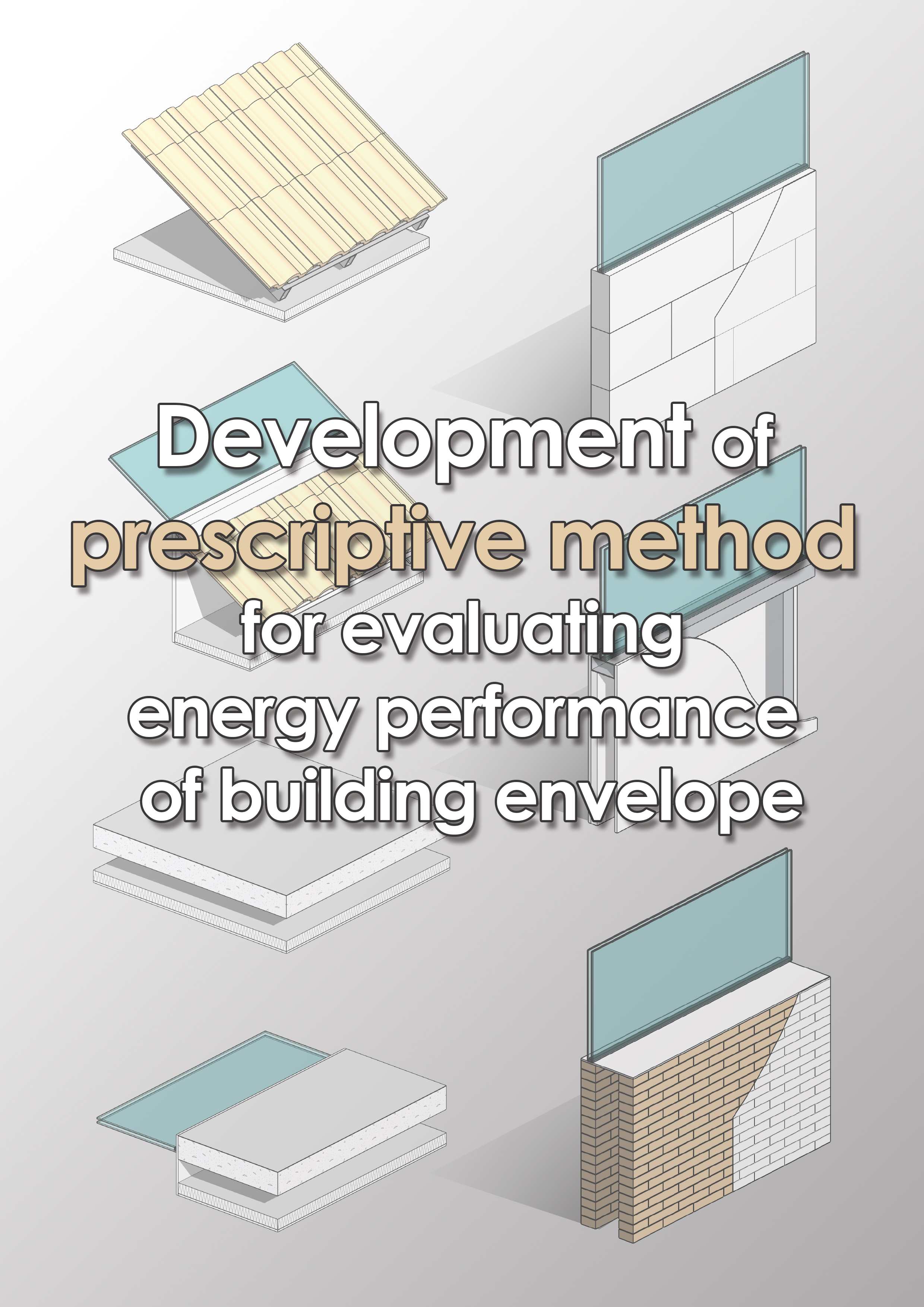Development of prescriptive method for evaluating energy performance of building envelope
Main Article Content
Abstract
Presently Thai Building Energy Code of the Ministry of Energy requires nine types of buildings with size of 2,000 Sq.m. or more to be compliant. The building envelope performance is determined by using OTTV and RTTV. This needs to be evaluated by using the BEC program. But at present, the building that meet the specific envelope criteria is less than 50%, among all building groups. Therefore, it can be seen that to pass the criteria is still quite difficult. The objective to must study of alternatives in the assessment of energy conservation buildings. From literature review it was found that some regulation and standards provide a prescriptive method option such as ASHRAE 90.1, which is a simple method without computer simulation. Therefore, the purpose of this study is to establish the prescriptive criteria for evaluating the energy performance of building envelopes. The study was conducted by reviewing international and local codes and standards of building envelopes, namely roof and exterior wall. Then the values found were tested with the BEC program to analyze the OTTV and RTTV compliance. It was found that for roof design using insulations with R value ≥ 1.25 (m2oC)/W would be complied with RTTV criteria for both flat roofs and pitched roofs, from the roof ratios of 1:3 to 3:1 in the main direction. It is also possible to have skylight at 3%, which must be designed according to the conditions of each building group. For the exterior wall, to comply with OTTV criteria the prescriptive requirements are to have WWR ≤ 40% in all building types. The mass wall type of lightweight concrete block should have U-value ≤ 1.20 W/(m2oC). As for the wall of brick type, the U-value should have ≤ 1.50 W/(m2oC), but must have a density-specific heat product ≥ 181.92 kJ/m2K. The steel frame wall should have U-value ≤ 0.42 W/(m2oC) and Installed insulation with the R value greater than the standard of no. 5 energy label, can be used on walls of all colors. It must be design the windows according to the conditions of each building group.
Article Details
References
American Society of Heating, Refrigerating and Air-Conditioning Engineers. (2004). Advanced energy design guide for small office buildings achieving 30% energy savings over ANSI/ASHRAE/IESNA standard 90.1-1999. United States: Author.
American Society of Heating, Refrigerating and Air-Conditioning Engineers. (2006). Advanced energy design guide for small retail buildings achieving 30% energy savings toward a net zero energy building. United States: Author.
American Society of Heating, Refrigerating and Air-Conditioning Engineers. (2016). ANSI/ASHRAE/IES Standard 90.1-2016. United States: Author.
American Society of Heating, Refrigerating and Air-Conditioning Engineers. (2017). Standard 90.1 user’s manual. United States: Author.
Building and Construction Authority. (2015). Green mark for non-residential buildings NRB: 2015. Singapore: Author.
Building Design and Construction. (2019). Prescriptive vs. performance building codes. Retrieved May 8, 2020, from https://www.bdcnetwork.com/blog/prescriptive-vs-performance-building-codes
Chirarattananon S., et al. (2004). Development of a building energy code for new buildings in Thailand. The Joint International Conference on Sustainable Energy and Environment (SEE). (pp.859-867). Prachuap Khiri Khan: Author.
Daoprakaimongkol, S. (2012). Neawtang karn lueak chai krachok pen phanang arkhan samnakngan prub akat phuea hai sotkhlong kub kot krasuang karn oakbab arkhan phuea karn anurak phalangngan pho so 2552. (In Thai) [Glass selection guide for curtain walls of air-conditioned office building in accordance with building energy code B.E. 2552] (Master’s thesis). Bangkok: Chulalongkorn University.
Evans, M., Roshchanka, V. & Graham, P. (2017). An international survey of building energy codes and their implementation. Journal of Cleaner Production, 158 (1), 382-389.
ICC Digital Codes Library. (2018). International Energy Conservation Code 2018 (IECC 2018). Retrieved May 20, 2020, from https://codes.iccsafe.org/content/iecc2018/chapter-4-ce-commercial-energy-efficiency
Ministry of Energy. (2007). Khumue pramoen arkhan prayat phalangngan lae pen mit to singwaetlom (arkhan satharana). (In Thai) [Building appraisal guide energy saving and environmentally friendly (public buildings)]. Bangkok: Chulalongkorn University.
Ministry of Energy. (2009a). Chalak prayat phalangngan prasitthiphap sung. (In Thai) [Energy Efficiency Labelling]. Retrieved January 10, 2020, from https://www.dede.go.th/ewt_news.php?nid=769&filename=index
Ministry of Energy. (2009b). Kot krasuang kamnot praphet rue khanat khong arkhan lae mattrathan lakken lae withikarn nai karn oakbab arkhan phuea karn anurak phalangngan pho so 2552. (In Thai) [Ministerial regulations prescribing categories or the size of the building and the standards, criteria and methods in building design for energy conservation, BE. 2552], (2009, 20 February). Royal Thai Government Gazette. Rule Number 126 section number 12 ก. pp.9-15.
Ministry of Energy. (2009c). Prakat krasuang phalangngan rueang lakken lae withi karn kham nuan nai karn oakbab arkhan pho so 2552. (In Thai) [Ministry of energy’s notification on criteria and calculation methods for building design of various systems, overall energy consumption of buildings and use of renewable energy of various building systems B.E. 2552], (2009, 28 August). Royal Thai Government Gazette. Rule Number 126 special section number 122 ง. pp.21-39.
Ministry of Energy. (2019). Rai ngan pracham pi 2019. (In Thai) [Annual report 2019]. Bangkok: Author.
Patanompee, K. (2014). Karn sueksa neawtang karn sang ken karn pramoen dan phalangngan lae singwaetlom samrab rongrian nai prathet Thai. (In Thai) [Development of design criteria for green school in Thailand] (Master’s thesis). Bangkok: Silpakorn University.
Usman, Z., & Ibrahim, K. (2018). A comparative analysis of energy provisions of Pakistan building code with Indian and USA building energy codes. Journal of Art, Architecture and Built Environment, 1 (1), 52–68.
Young, R. (2014). Global approaches: a comparison of building energy codes in 15 countries. ACEEE, 4 (1), 351-366.


